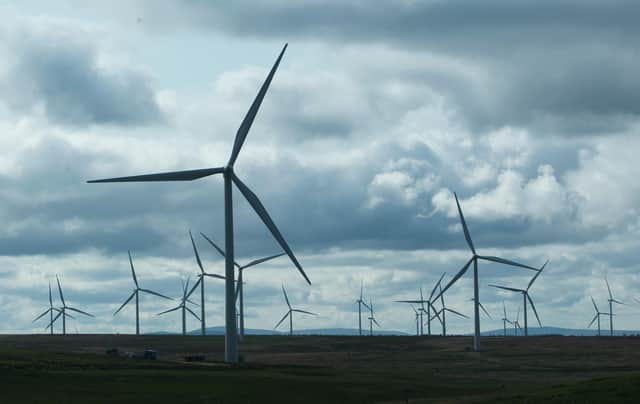Kingston not benefitting from onshore wind – as Government backs away from farms increase


Prime Minister Boris Johnson has reduced plans to boost the UK's current crop of onshore wind farms in his strategy to ensure the nation's energy security, meaning Kingston is unlikely to benefit from the energy source any time soon.
The removal of targets for land-based wind turbines has been criticised by Labour, which had called for a relaxing of the planning regulations around onshore developments before Mr Johnson published his energy strategy last week.
Advertisement
Hide AdAdvertisement
Hide AdDepartment for Business, Energy and Industrial Strategy figures show Kingston had no onshore wind turbines in 2020.
In contrast, Havering led all areas in London, with more than 10 gigawatt-hours of energy.
The Government’s energy strategy aims to boost new nuclear power, offshore wind and hydrogen, but stops short of increasing onshore wind capacity.
Mr Johnson said onshore wind farms are controversial because of their visual impact, saying they "will have a very high bar to clear", but is targeting 50 gigawatts of offshore wind power by 2030, up from previous commitments of 40.
Advertisement
Hide AdAdvertisement
Hide Ad“Wholesale changes” to planning regulations for onshore wind will not be introduced, the Government said, but it will instead consult with communities who wish to host the infrastructure in return for lower energy bills.
Separate national figures, which cover the latest calendar year, show the UK had 14.5 GW of onshore wind power capacity at the end of 2021, but generated less energy than in 2020 – from 34.7 GWh down to 29 GWh.
It also had 11.3 gigawatts of offshore wind power capacity at the end of 2021, up from 10.4 the year before and more than six times as much as a decade ago.
Offshore wind must more than quadruple by the end of the decade to reach the Government's target.
Advertisement
Hide AdAdvertisement
Hide AdShadow climate change and net zero secretary Ed Miliband told BBC Radio 4's Today programme that Britain's "energy policy is being held to ransom by Tory backbenchers", many of which hold home county seats.
"The Government has rejected the cheapest, lowest cost, most secure forms of power we have, including onshore wind," added Mr Miliband.
Overall, the UK generated 121,000 GWh of renewable energy in 2021.
RenewableUK’s chief executive Dan McGrail and Ana Musat, head of policy at Aldersgate Group, a non-profit alliance of business leaders lobbying for a sustainable economy, urged the Government to reconsider changing onshore wind farm planning rules.
Advertisement
Hide AdAdvertisement
Hide Ad"We need to make use of every tool in the box to boost our energy independence, so it's right that Government is looking again at planning rules so that onshore wind can proceed in parts of England where there is support, as it's the cheapest source of new power and the quickest to build," said Mr McGrail.
Ms Musat added: "Beyond this strategy, a greater focus on deploying onshore wind as the lowest cost renewable technology and a greater emphasis on improving the energy efficiency of buildings should be key priorities for government."